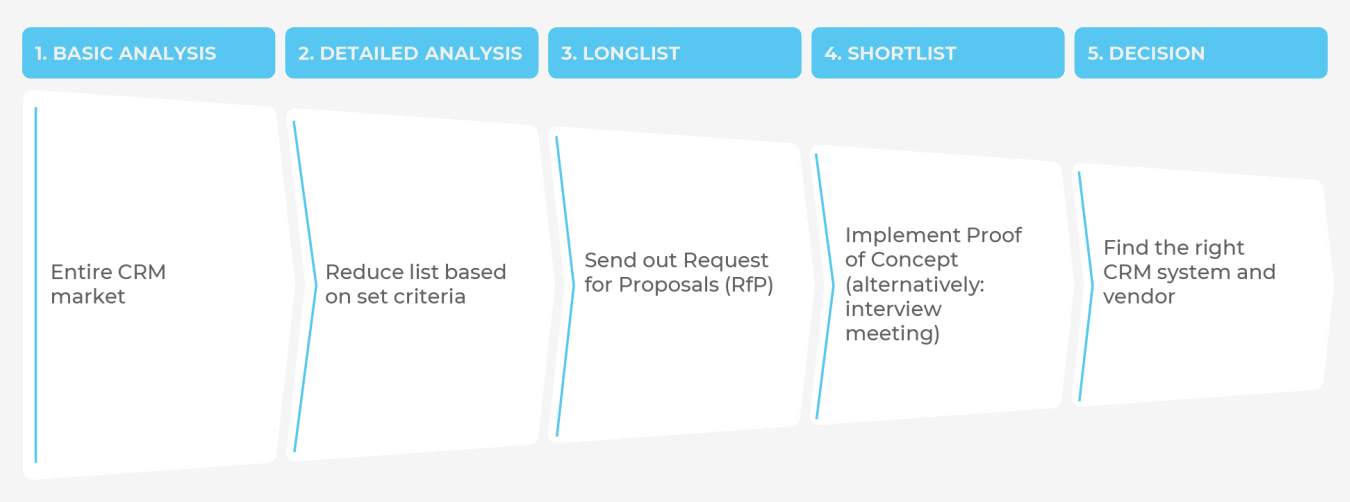2 min read
Why Customer Experience Is Becoming the Ultimate Competitive Edge
Products can be replaced, prices can be compared, but experiences last. In the chapter “Customer...
By Juliane Waack on 05.07.2023

5 min read
According to a recent Gartner study, 60% of technology buyers who are considering a renewal or expansion of cloud-based services regret their purchase. However, this has a lot more to do with the decision process than with the solutions.
Content:
Buyer's remorse is a popular term that afflicts both B2B and B2C customers. After the initial euphoria of a new purchase, it sets in when the product or service has been especially expensive.
Other triggers of buyer's remorse:
According to a recent survey by Gartner among more than 1500 participants, 60% said that they regret their purchase when considering a renewal or expansion of any "as-a-service"-solution. Compared to 2020, this marks an increase of 6%.
"Regret is a known issue with enterprise technology purchase decisions", explains Hank Barnes, Distinguished VP Analyst at Gartner. "The issue is significant enough that it raises the question of whether business to business (B2B) technology buyers have negative attitudes toward purchases by default."
Gartner points out the three main reasons for remorse among technology buyers:
These three reasons usually cause longer buying cycles which further cost, increase complexity and cause frustration.
However, these challenges are not always caused by the vendor but also stem from "ineffective or dysfunctional behaviors within the buying team", according to Barnes.
Meaning: it's not the vendor but the buyer who makes things more complicated than necessary.
Whereas Gartner gives vendors some tips to reduce buyer's remorse (or even eliminate it completely), I would like to go ahead and offer buying teams a few tips to reduce decision times, create more transparency and ensure a good baseline to make an informed decision.
A proper kickoff with all (potential) stakeholders is a good way to make sure that everyone is involved who can help with the research, evaluation and decision for a new technology solution. In this first briefing, responsibilities and roles can be defined and a broad roadmap can be set up.
That way, it's not necessary to include all stakeholders in all steps but rather identify who is needed at which phase of the decision process.
A proper goal for a new solution is the best way to make sure that the final decision has the right guardrails. It doesn't have to be just one goal but it needs to be measurable and tied to the overall company strategy.
It's usually not advised to adopt a new technology solution just because it's new or the competition uses it. Your company needs to be clear about the "why" and ideally have proper use cases in mind which can help setting up the requirements catalog.
Potential goals (based on our own customer projects):
A requirements catalog helps you to define what you and especially the users of the technology solution need to continue and optimize their work. This usually involves different business units to make sure that IT-combability, compliance, usability, brand alignment, functionalities and data management are all covered in the new solution.
Additionally, a proper requirements catalog includes different priorities which can further help settle choices between two vendors if both cover the "must haves" but only one excells in the "nice to haves".
It is logical to start with a broad analysis of all available solutions and then step by step reduce choices to a manageable shortlist. For many buyers (or buying centers), the amount of choices can result in frustration and stagnation which is why it's important to have a proper requirements catalogue and diverse decision team to focus on the solutions that fit all requirements.

It is advised to create tender documents for a closer selection, evaluation criteria (requirements catalog) as well as a longlist in parallel to have the basics for a request for proposal (RfP) which will be sent out to the chosen vendors in the longlist, so they can provide you with the right information regarding their solutions.
Depending on the size and scope of the technology solution, the RfP can be short or incredibly detailed. However, it should always be informative enough so the vendors can provide a proper offer.
Once you receive the offers, you have yet another set of information to "whittle" your longlist down to a shortlist. Depending on the scope and size of your solution, you can either choose based on the shortlist or you can invite the vendors to perform a presentation or even a proof of concept including a presentation. However, it's generally helpful to set up at least one meeting with the top candidates.
This presentation offers you and the vendor space to ask questions, align on your goals, hear the vendors' bids and also get a feel for their respective communication style and culture (which can be important depending on the type of solution you're looking for).
After the presentations, you should have enough information to structure and compare the shortlisted vendors and make a final decision. Make sure to include the relevant stakeholders that have been defined at the beginning of your evaluation process.
Download our step-by-step guide to manage your CRM evaluation process efficiently and transparently from the right stakeholder selection up to the organization of vendor presentations.
Juliane Waack is Editor in Chief at DIGITALL and writes about the digital transformation, megatrends and why a healthy culture is essential for a successful business.
by Sabine Kirchem
Products can be replaced, prices can be compared, but experiences last. In the chapter “Customer...
by Sabine Kirchem
Customer Relationship Management (CRM) is no longer just a technical discipline but revolves around...
by Sabine Kirchem
There's loads of data out there – but are we truly utilizing it? And more importantly, are we using...